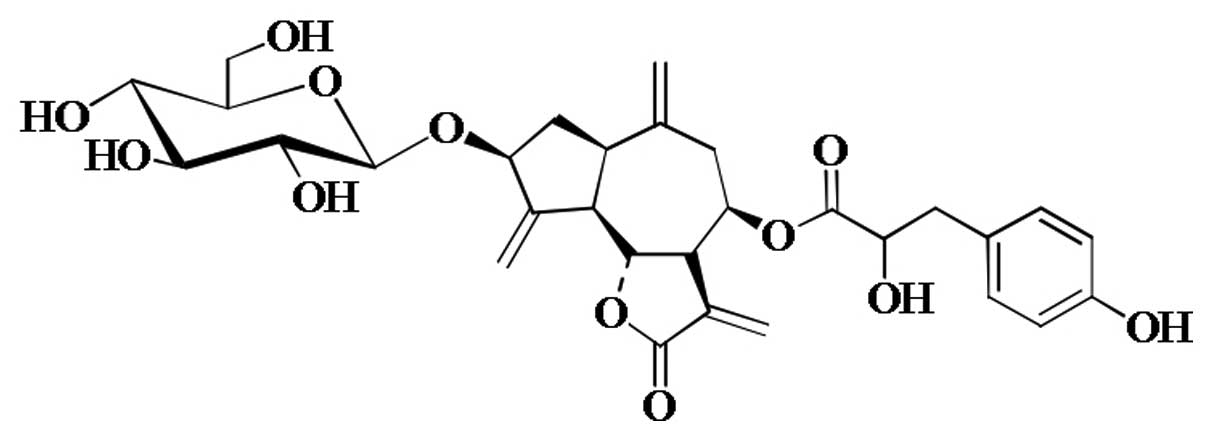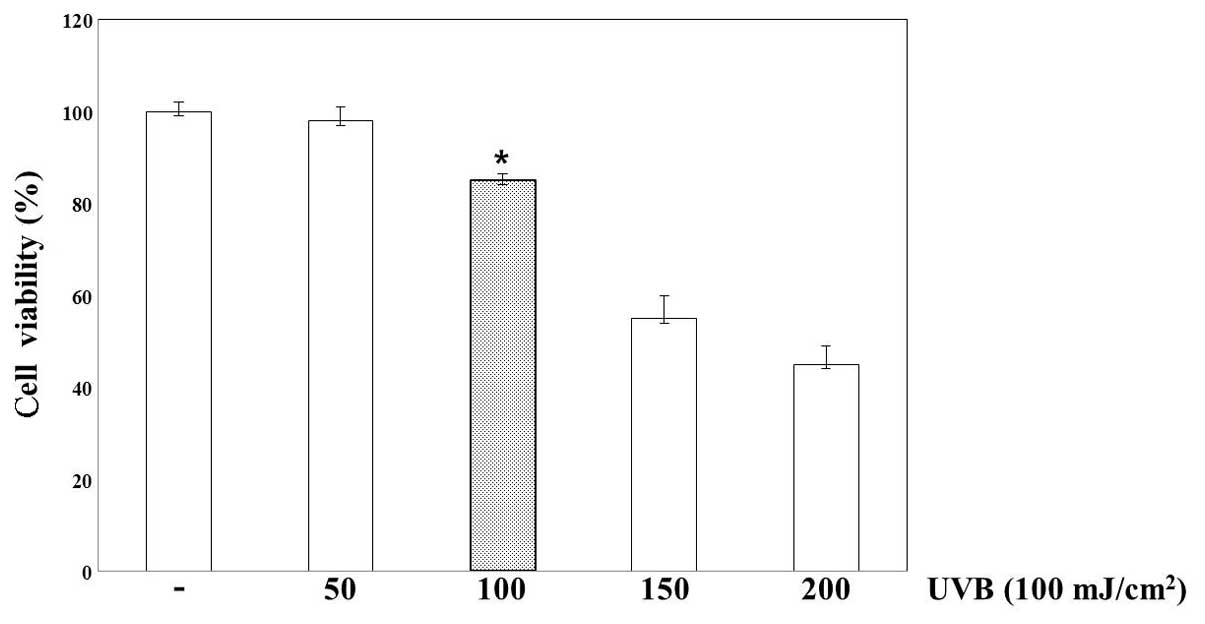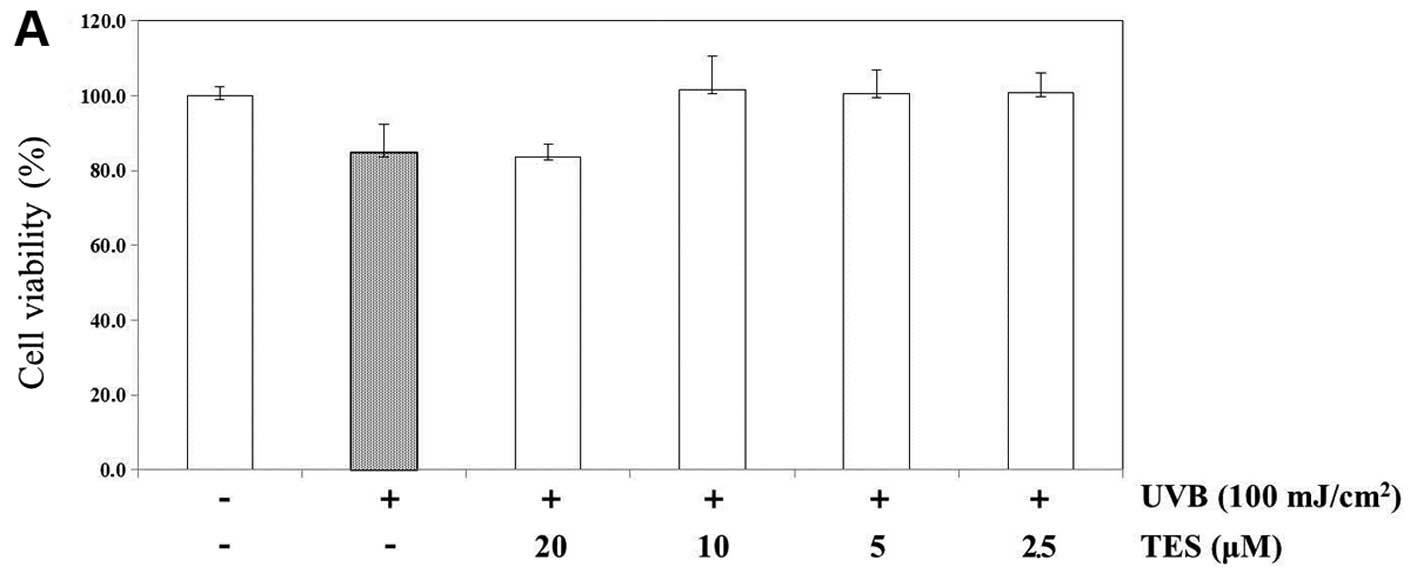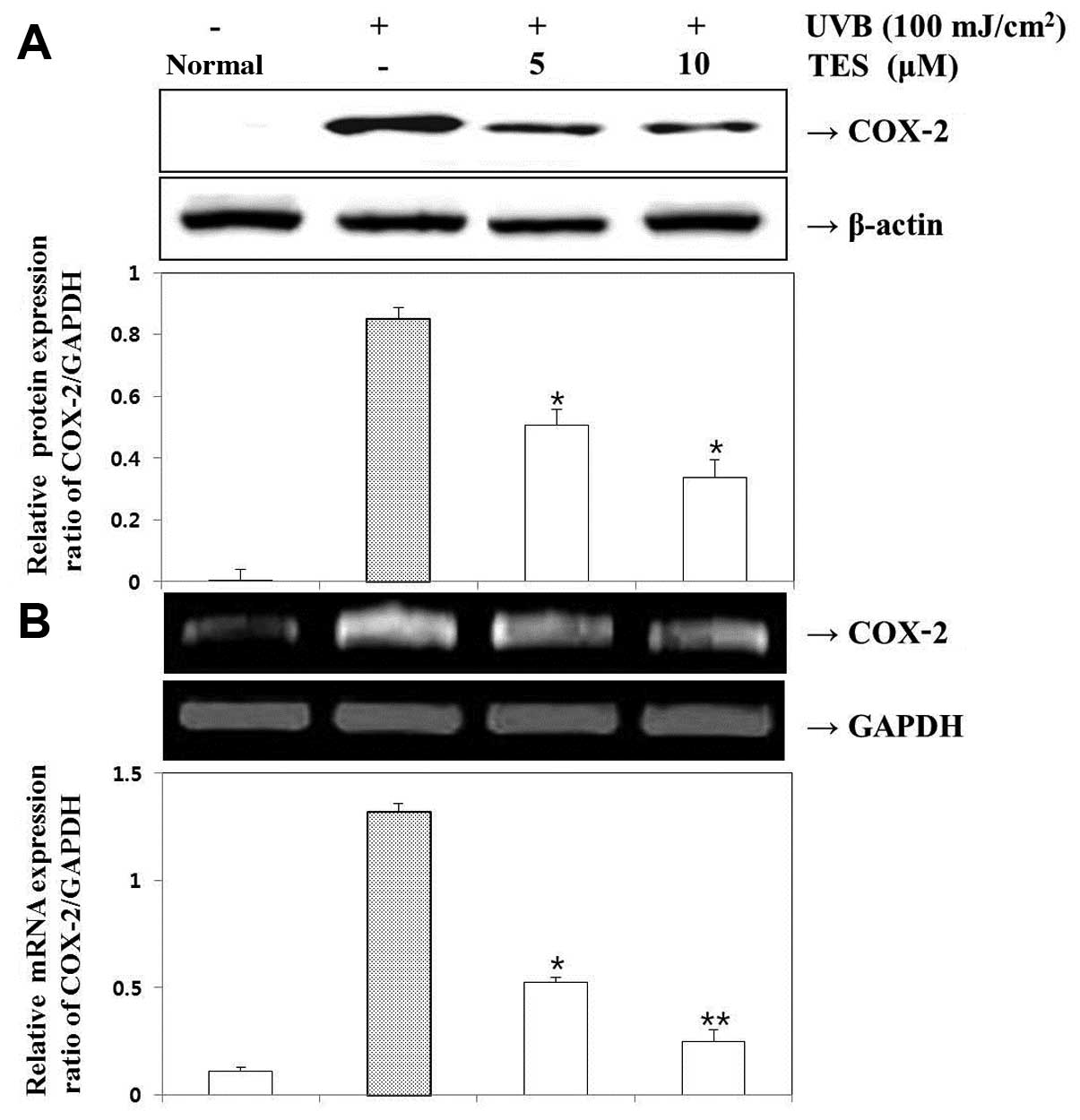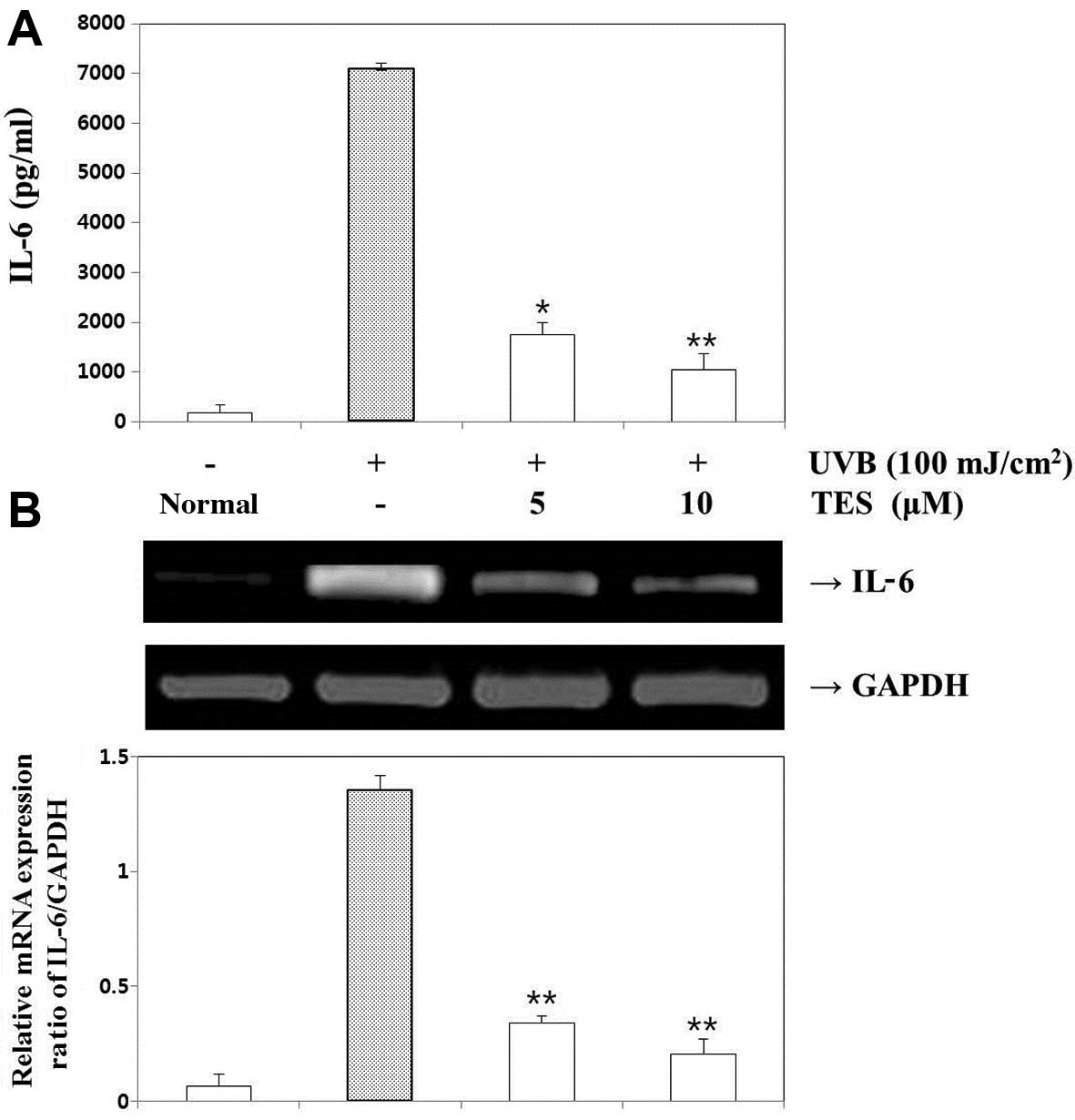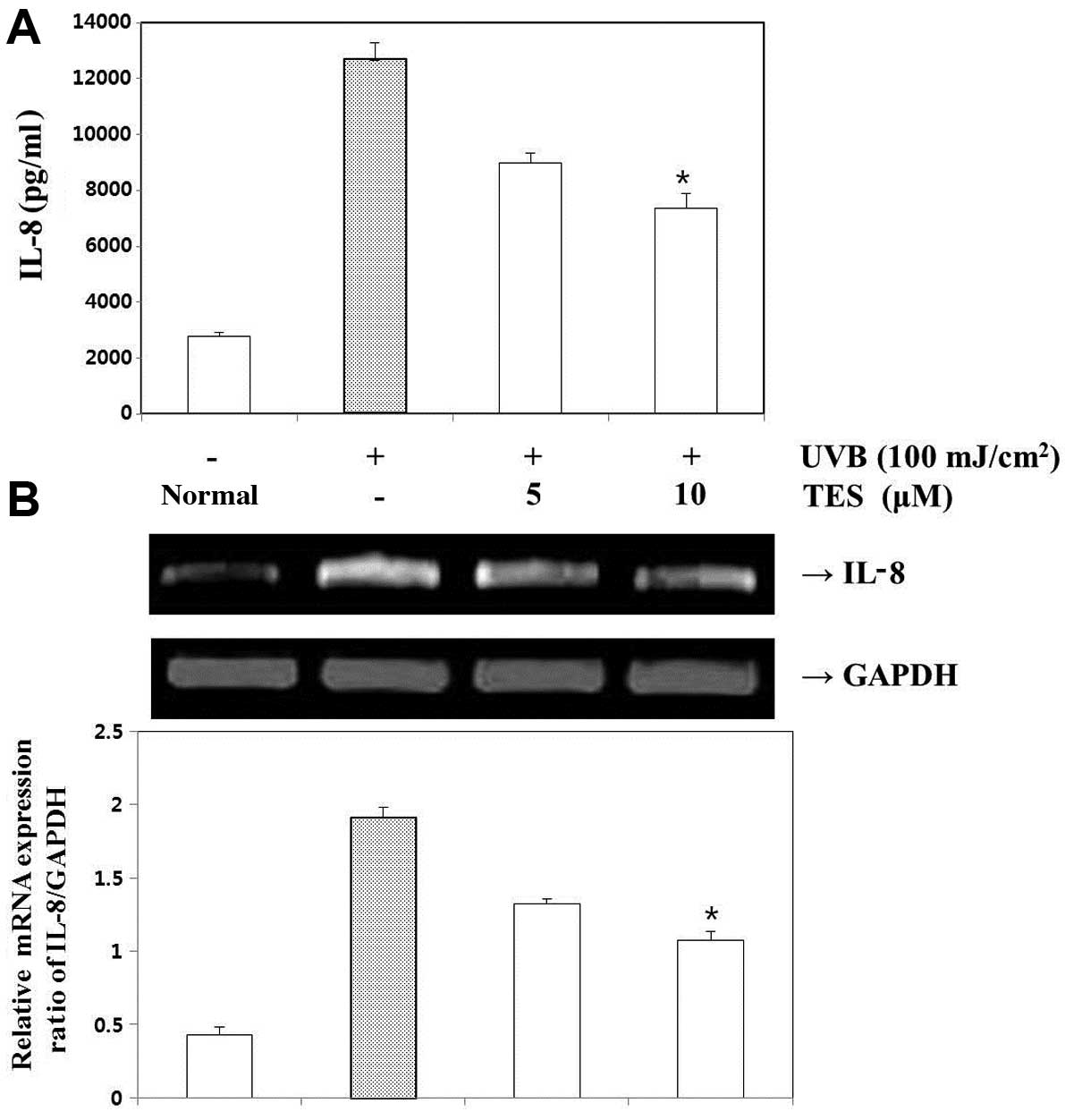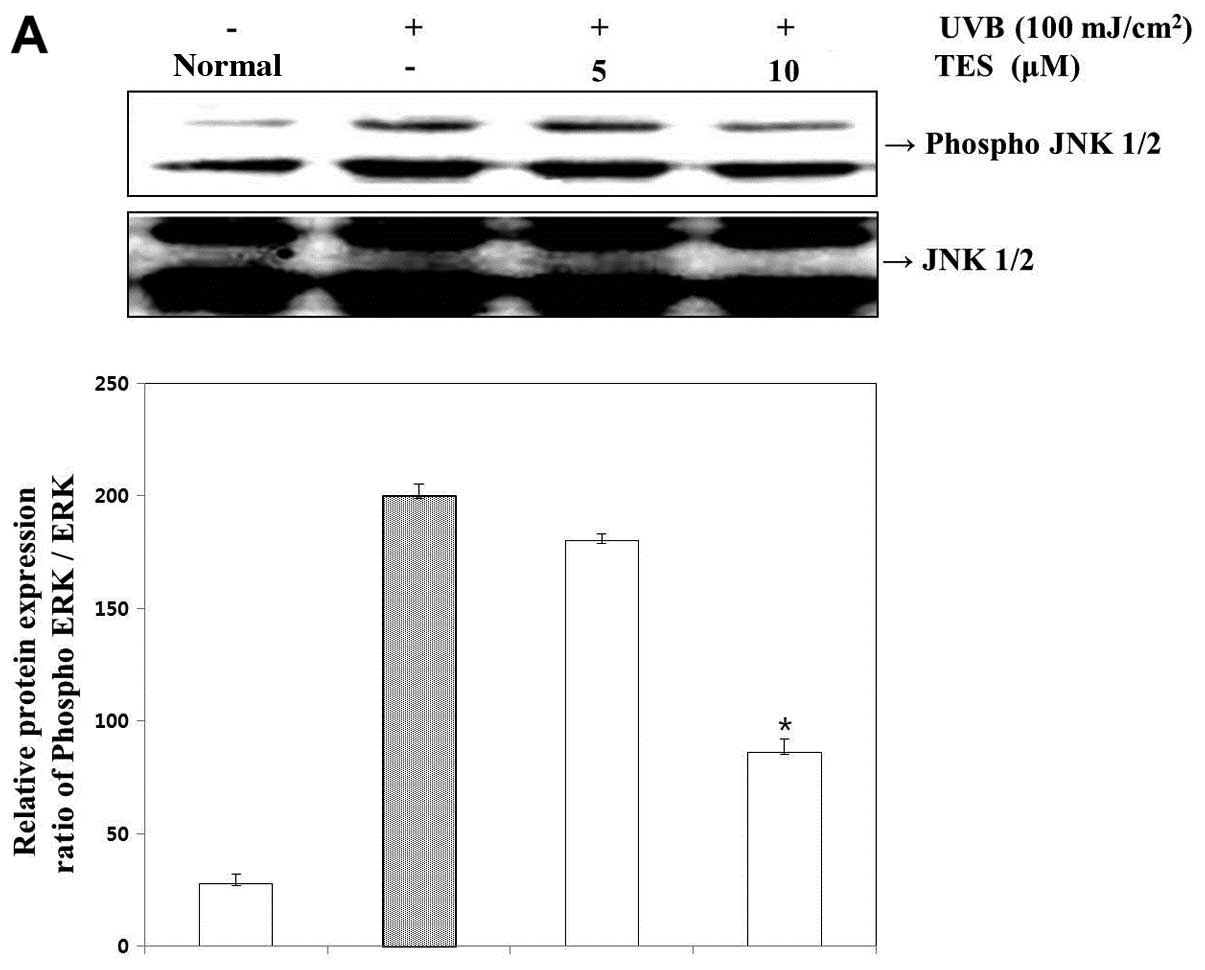|
1
|
Murphy GF: Structure, function and
reaction patterns. Dermatopathology. W.B. Saunders; Philadelphia,
PA: pp. 251995
|
|
2
|
Yager J: The skin as an immune organ.
Advances in Veterinary Dermatology. Ihrke PJ, Mason IS and White
SD: Pergamon Press; Oxford: pp. 311993
|
|
3
|
de Gruijl FR, Sterenborg HJ, Forbes PD,
Davies RE, Cole C, Kelfkens G, van Weelden H, Slaper H and van der
Leun JC: Wavelength dependence of skin cancer induction by
ultraviolet irradiation of albino hairless mice. Cancer Res.
53:53–60. 1993.PubMed/NCBI
|
|
4
|
van der Leun J and de Gruijl F: Influence
of ozone depletion on human and animal health. UV-B Radiation and
Ozone Depletion: Effects on Humans, Animals, Plants, Microorganisms
and Materials. Tevini M: Lewis Publishers; Boca Raton, FL: pp.
95–123. 1993
|
|
5
|
Rosette C and Karin M: Ultraviolet light
and osmotic stress: activation of the JNK cascade through multiple
growth factor and cytokine receptors. Science. 274:1194–1197. 1996.
View Article : Google Scholar : PubMed/NCBI
|
|
6
|
Afaq F, Adhami VM and Mukhtar H:
Photochemoprevention of ultraviolet B signaling and
photocarcinogenesis. Mutat Res. 571:153–173. 2005. View Article : Google Scholar : PubMed/NCBI
|
|
7
|
Yaar M and Gilchrest BA: Photoageing:
mechanism, prevention and therapy. Br J Dermatol. 157:874–887.
2007. View Article : Google Scholar : PubMed/NCBI
|
|
8
|
Malorni W, Donelli G, Straface E, Santini
MT, Paradisi S and Giacomoni PU: Both UVA and UVB induce
cytoskeleton-dependent surface blebbing in epidermoid cells. J
Photochem Photobiol B. 26:265–270. 1994. View Article : Google Scholar : PubMed/NCBI
|
|
9
|
Zamansky GB, Perrino BA and Chou IN:
Disruption of cytoplasmic microtubules by ultraviolet radiation.
Exp Cell Res. 195:269–273. 1991. View Article : Google Scholar : PubMed/NCBI
|
|
10
|
Zamansky GB and Chou IN: Disruption of
keratin intermediate filaments by ultraviolet radiation in cultured
human keratinocytes. Photochem Photobiol. 52:903–906.
1990.PubMed/NCBI
|
|
11
|
Zamansky GB and Chou IN: Environmental
wavelengths of ultraviolet light induce cytoskeletal damage. J
Invest Dermatol. 89:603–606. 1987. View Article : Google Scholar : PubMed/NCBI
|
|
12
|
Moll I, Bohnert E, Treib U and Jung EG:
Effects of ultraviolet B radiation on cytoskeletal and adhesion
molecules in human epidermis. Photodermatol Photoimmunol Photomed.
10:26–32. 1994.PubMed/NCBI
|
|
13
|
Godar DE: Preprogrammed and programmed
cell death mechanisms of apoptosis: UV-induced immediate and
delayed apoptosis. Photochem Photobiol. 63:825–830. 1996.
View Article : Google Scholar : PubMed/NCBI
|
|
14
|
Shindo Y and Hashimoto T: Ultraviolet
B-induced cell death in four cutaneous cell lines exhibiting
different enzymatic antioxidant defences: involvement of apoptosis.
J Dermatol Sci. 17:140–150. 1998. View Article : Google Scholar : PubMed/NCBI
|
|
15
|
Kim SH: Inhibitory effects of Ixeris
dentata on the mutagenicity of aflatoxin B1,
N-methyl-N’-nitro-N-nitrosoguanidine and the growth of MG-63 human
osteosarcoma cells. J Korean Soc Food Sci Nutr. 24:305–312.
1995.
|
|
16
|
Kim M and Lee M: Volatile flavor
components of Ixeris dentata and Amaranthus
mangostanus. Han’guk Nonghwa Hakhoe chi. 31:394–399. 1988.(In
Korean).
|
|
17
|
Lee E: Effects of Ixeris dentata
ext. on lowering lipid and antioxidation. Korean J Plant Res.
24:55–60. 2011.(In Korean).
|
|
18
|
Park EK, Sung JH, Trinh HT, Bae EA, Yun
HK, Hong SS and Kim DH: Lactic acid bacterial fermentation
increases the antiallergic effects of Ixeris dentata. J
Microbiol Biotechnol. 18:308–313. 2008.PubMed/NCBI
|
|
19
|
Chung HS: Inhibition of monamine oxidase
by a flavone and its glycoside from Ixeris dentata Nakai.
Nutraceut Food. 8:141–144. 2003. View Article : Google Scholar
|
|
20
|
Chung HS, Jeong HJ, Han MJ, Park ST, Seong
KK, Baek SH, Jeong DM, Kim MJ and Kim HM: Nitric oxide and tumor
necrosis factor-alpha production by Ixeris dentata in mouse
peritoneal macrophages. J Ethnopharmacol. 82:217–222. 2002.
View Article : Google Scholar : PubMed/NCBI
|
|
21
|
Kim SB, Kang OH, Keum JH, Mun SH, An HJ,
Jung HJ, Hong SH, Jeong DM, Kweon KT and Kwon DY: Anti-inflammatory
effect of Ixeris dentata on ultraviolet B-induced HaCaT
keratinocytes. Nat Prod Sci. 18:60–66. 2012.(In Korean).
|
|
22
|
Kim MJ, Kim JS, Jeong DM, Han SS and Yu
CY: Effect of antioxidant, antimutagenicity and anticancer of root
extract from Ixeris dentata Nakai. Korean J Med Crop Sci.
10:222–229. 2002.
|
|
23
|
Kim JH, Lim HS, Ha H, Seo CS and Shin HK:
Inulae flos and its compounds inhibit TNF-α- and IFN-γ-induced
chemokine production in HaCaT human keratinocytes. Evid Based
Complement Alternat Med. 2012:2803512012.PubMed/NCBI
|
|
24
|
Cha MR, Choi YH, Choi CW, Yoo DS, Kim YS,
Choi SU, Kim YH and Ryu SY: New guaiane sesquiterpene lactones from
Ixeris dentata. Planta Med. 77:380–382. 2011. View Article : Google Scholar
|
|
25
|
Choi JS, Young HS and Kim BW: Hypoglycemic
and hypolipemic effects of Ixeris dentata in diabetic rats.
Arch Pharm Res. 13:269–273. 1990. View Article : Google Scholar
|
|
26
|
Oh SH, Sung TH and Kim MR: Ixeris
dentata extract maintains glutathione concentrations in mouse
brain tissue under oxidative stress induced by kainic acid. J Med
Food. 6:353–358. 2003. View Article : Google Scholar
|
|
27
|
Zidorn C: Sesquiterpene lactones and their
precursors as chemosystematic markers in the tribe Cichorieae of
the Asteraceae. Phytochemistry. 69:2270–2296. 2008. View Article : Google Scholar : PubMed/NCBI
|
|
28
|
Takashima A and Bergstresser PR: Impact of
UVB radiation on the epidermal cytokine network. Photochem
Photobiol. 63:397–400. 1996. View Article : Google Scholar : PubMed/NCBI
|
|
29
|
Grewe M, Trefzer U, Ballhorn A, Gyufko K,
Henninger H and Krutmann J: Analysis of the mechanism of
ultraviolet (UV) B radiation-induced prostaglandin E2 synthesis by
human epidermoid carcinoma cells. J Invest Dermatol. 101:528–531.
1993. View Article : Google Scholar : PubMed/NCBI
|
|
30
|
An KP, Athar M, Tang X, Katiyar SK, Russo
J, Beech J, Aszterbaum M, Kopelovich L, Epstein EH Jr, Mukhtar H
and Bickers DR: Cyclooxygenase-2 expression in murine and human
nonmelanoma skin cancers: implications for therapeutic approaches.
Photochem Photobiol. 76:73–80. 2002. View Article : Google Scholar : PubMed/NCBI
|
|
31
|
Chen W, Tang Q, Gonzales MS and Bowden GT:
Role of p38 MAP kinases and ERK in mediating ultraviolet-B induced
cyclooxygenase-2 gene expression in human keratinocytes. Oncogene.
20:3921–3926. 2001. View Article : Google Scholar : PubMed/NCBI
|
|
32
|
Lin SK, Kok SH, Yeh FTC, Kuo MYP, Lin CC,
Wang CC, Goldring SR and Hong CY: MEK/ERK and signal transducer and
activator of transcription signaling pathways modulate oncostatin
M-stimulated CCL2 expression in human osteoblasts through a common
transcription factor. Arthritis Rheum. 50:785–793. 2004. View Article : Google Scholar
|
|
33
|
Mahns A, Wolber R, Stäb F, Klotz LO and
Sies H: Contribution of UVB and UVA to UV-dependent stimulation of
cyclooxygenase-2 expression in artificial epidermis. Photochem
Photobiol Sci. 3:257–262. 2003. View
Article : Google Scholar : PubMed/NCBI
|
|
34
|
Vayalil PK, Elmets CA and Katiyar SK:
Treatment of green tea polyphenols in hydrophilic cream prevents
UVB-induced oxidation of lipids and proteins, depletion of
antioxidant enzymes and phosphorylation of MAPK proteins in SKH-1
hairless mouse skin. Carcinogenesis. 24:927–936. 2003. View Article : Google Scholar : PubMed/NCBI
|
|
35
|
Afaq F, Adhami VM and Ahmad N: Prevention
of short-term ultraviolet B radiation-mediated damages by
resveratrol in SKH-1 hairless mice. Toxicol Appl Pharmacol.
186:28–37. 2003.PubMed/NCBI
|
|
36
|
Cho JW, Lee KS and Kim CW: Curcumin
attenuates the expression of IL-1β, IL-6, and TNF-α as well as
cyclin E in TNF-α-treated HaCaT cells; NF-κB and MAPKs as potential
upstream targets. Int J Mol Med. 19:469–474. 2007.
|



